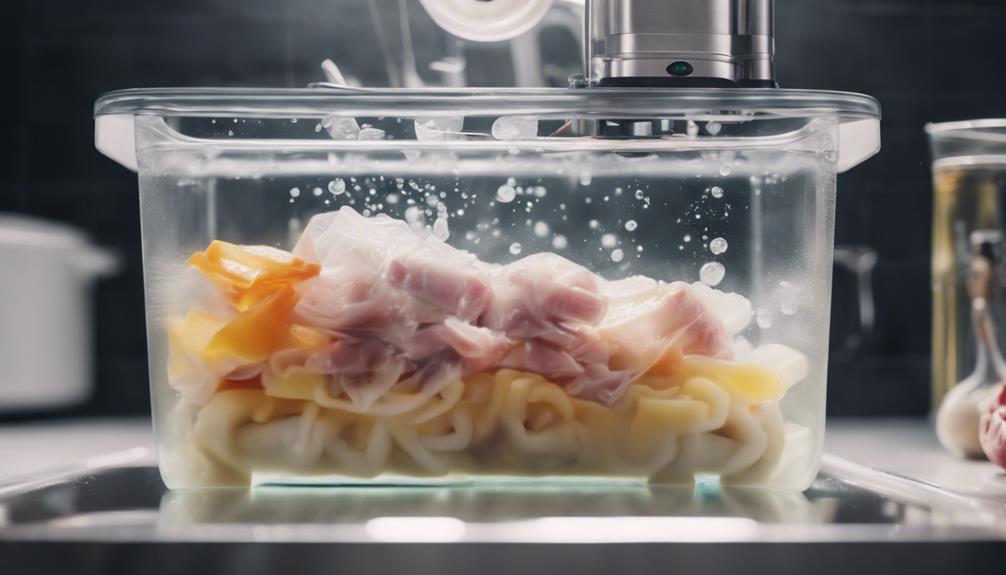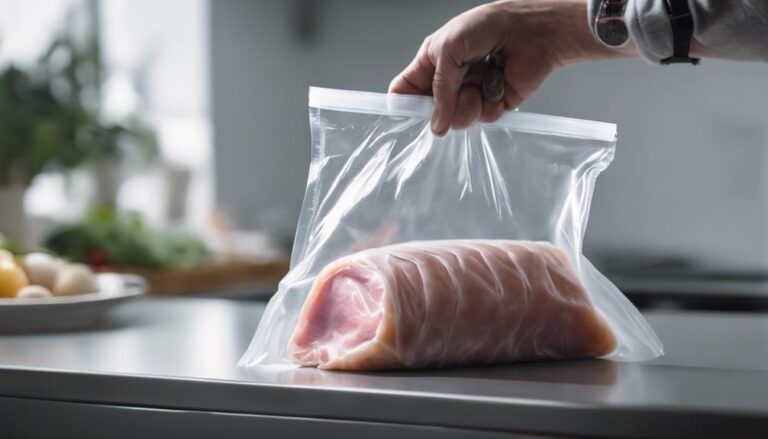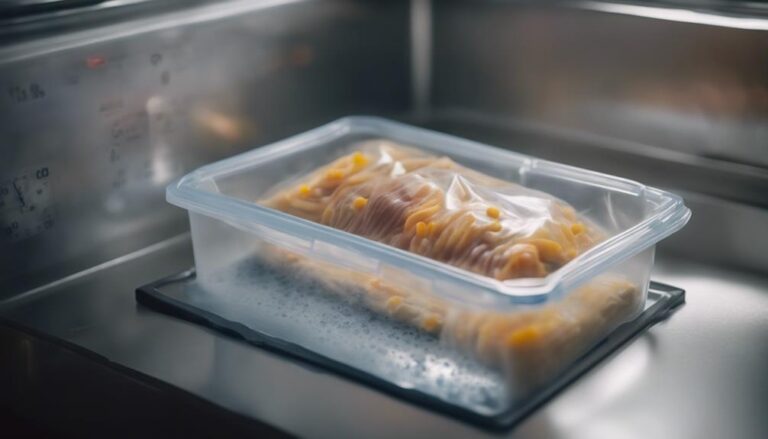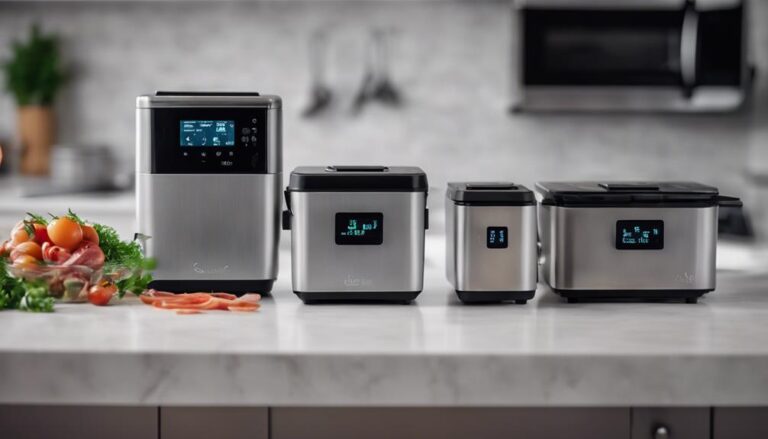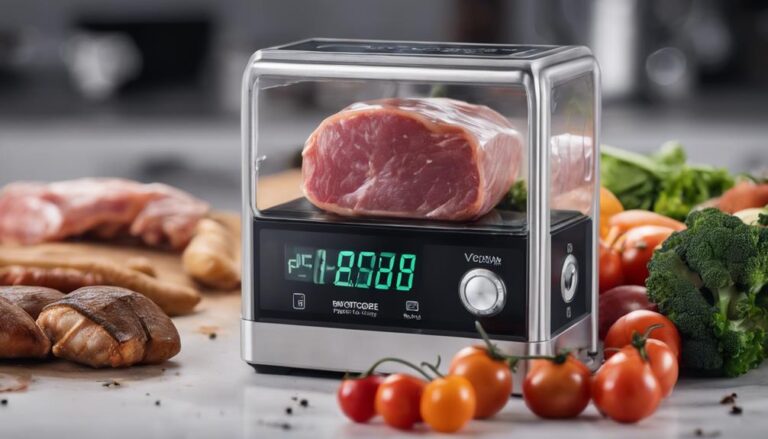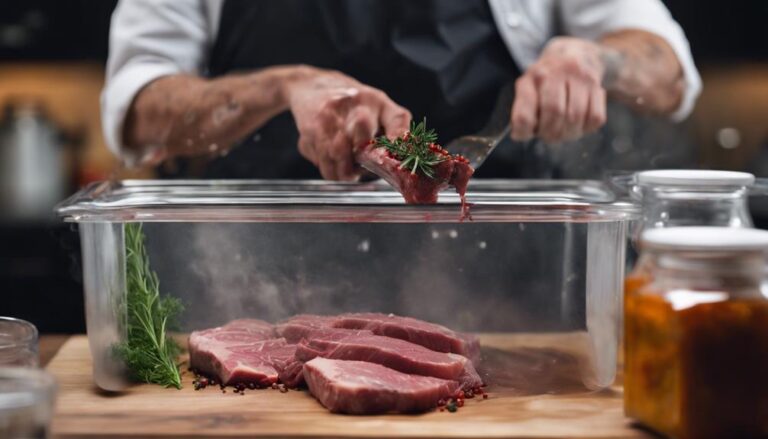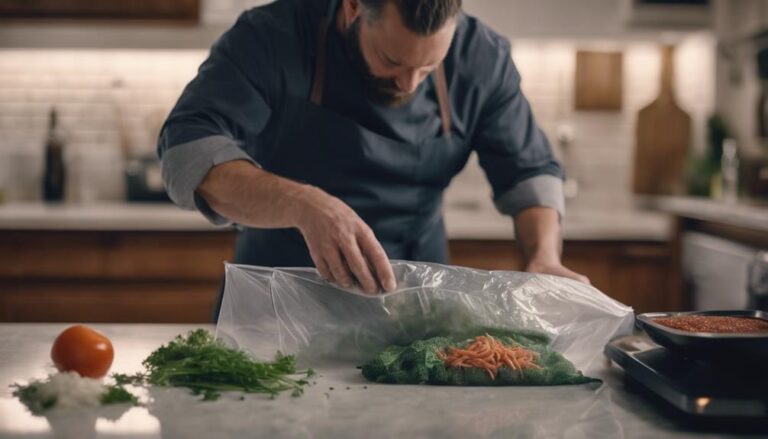How to Manage Your Sous Vide Water Bath
Hey there, budding sous vide chef! To manage your water bath like a pro: Fill it up correctly, watch that water level, and keep it clean for tasty results. Don't forget the lid to stop water from disappearing like a magician's assistant. Nail the temp, time, and give your food a cozy water bath to chill in. Keep an eye on that thermometer! Adjust temp if your dish wants a spa day. Finally, when your food's ready, handle it like a boss, let it rest, and add that final touch. Psst…want to up your sous vide game? Keep exploring these tips!
What You Will Learn Here
- Maintain correct water level for even cooking.
- Set accurate time and temperature for precise results.
- Monitor water temperature closely throughout cooking.
- Safely remove food with tongs or a slotted spoon.
- Clean and store equipment properly after each use.
Setting Up Your Water Bath
When setting up your water bath for sous vide cooking, make sure to fill the container with water according to your device's specifications. The water level is important here; too much and you might've a mini flood on your hands, too little, and your food won't cook evenly. Also, be a water snob – make sure your water is pure and free of any impurities. No one wants their gourmet meal tasting like a swimming pool, right?
To keep things steamy (literally), use a sous vide lid or cover to prevent water evaporation and maintain a consistent temperature. You don't want your water disappearing like Houdini during the cooking process. Remember, check on that water level now and then, especially during long cooking sessions. Your sous vide setup isn't a self-sustaining ecosystem; it needs a bit of TLC.
Lastly, keep a close eye on the water temperature. You're not running a hot tub here; precision matters in sous vide cooking. So, stay vigilant and make sure that water behaves!
Setting the Time and Temperature
To achieve precise cooking results in sous vide, make sure you set the accurate time and temperature on your device. The cooking time and temperature settings are essential for ensuring your food is perfectly cooked. Remember, the water in the bath needs to reach and maintain the desired temperature to cook your vacuum-sealed goodies just right. It's like creating a cozy jacuzzi for your food!
When setting the temperature, consider the type of food you're cooking for ideal results. Consult sous vide cooking guides or recipes to determine the recommended settings. Food safety is key, so double-check that your water bath is at the exact temperature required for your dish. A reliable thermometer can be your best friend in ensuring precision.
Adjusting the time and temperature based on what you're cooking will help you achieve that perfect level of doneness. So, go ahead, set those controls, and let your sous vide machine work its magic!
Monitoring the Cooking Process
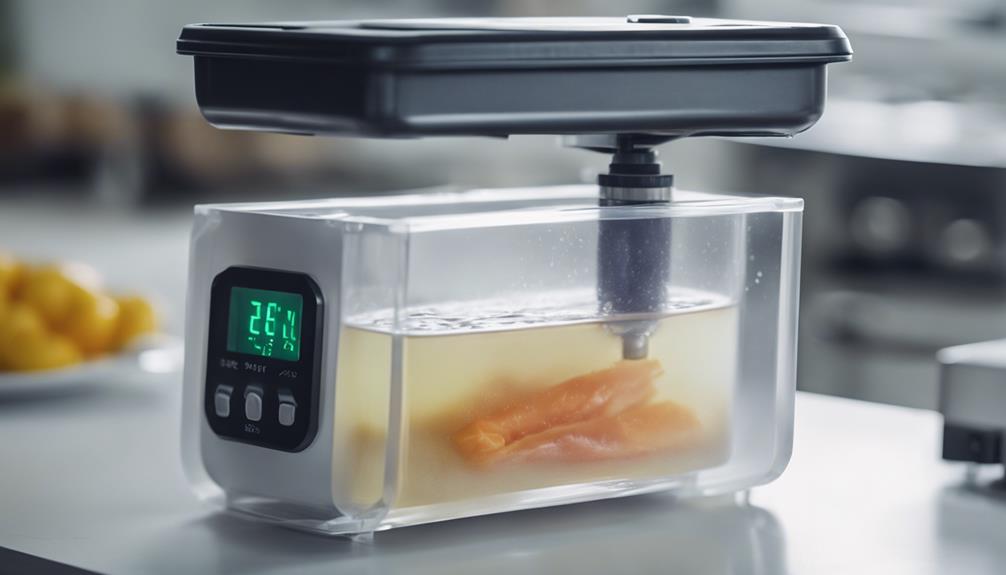
Guarantee your sous vide device maintains precise temperature control while monitoring the cooking process accurately. When cooking sous vide with your Anova Precision (or any other reliable device), keeping an eye on the water level is essential. Make sure your food is fully immersed for efficient heat transfer – you don't want any floating surprises messing with your perfect meal.
Throughout the cooking time, be the vigilant chef you're and monitor that water temperature like it's the star of the show. Adjust on the fly if needed to hit that sweet spot of doneness. Oh, and don't forget to cover your bath with a lid or some insulation to trap that heat in and avoid a disappearing act by your water due to evaporation.
Safely Removing and Finishing the Food
After cooking your food in the sous vide water bath, safely remove it using tongs or a slotted spoon. Remember, you don't want to burn those fingers that just prepared this delicious meal! Once you've got your perfectly cooked food in hand, give it a quick pat dry with some paper towels. This step helps to get rid of excess moisture, ensuring a better sear or presentation.
Here are a few quick tips to keep in mind:
- Allow your cooked food to rest for a few minutes after taking it out of the water bath. This helps the juices redistribute for maximum flavor.
- For delicate items like fish, handle them with care during removal to avoid any accidental breakage.
- Make sure your food is properly seasoned and ready for the finishing touch, whether it's a quick sear in a hot pan or a flavorful sauce drizzled on top.
Now that you've safely removed your food, it's time to add that final touch before digging in!
Cleaning and Storing Your Equipment
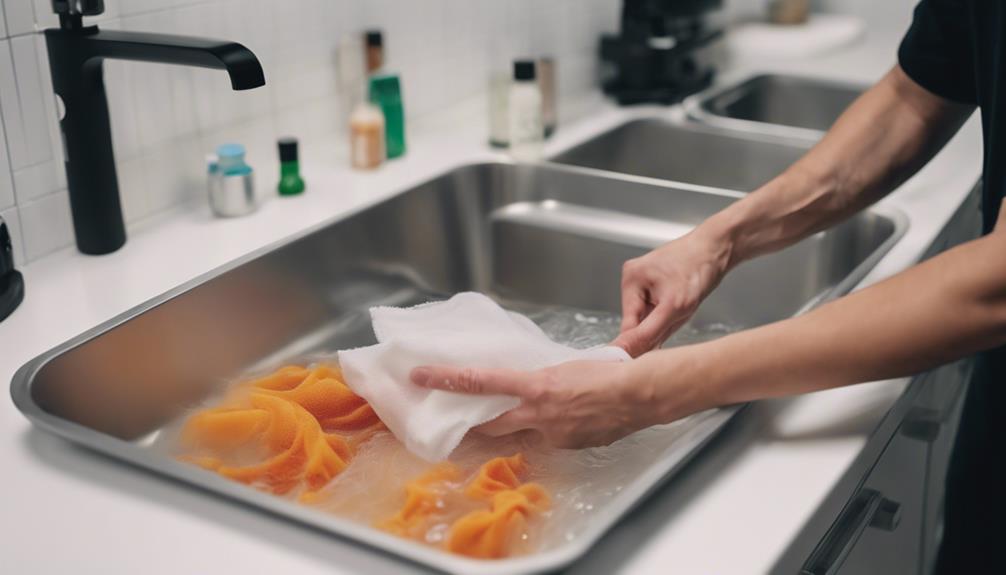
Maintain the longevity and cleanliness of your sous vide equipment by following these simple steps.
Clean your sous vide bath after each use to prevent mineral buildup and wipe down the exterior to keep it looking pristine and spotless. Remember, a happy water bath makes for delicious meals!
After use, make sure to empty and dry the water bath container thoroughly. No one wants a surprise science experiment growing in there. Use a mild detergent and a soft cloth to give it a good clean, ensuring no residue is left behind.
And don't forget about those vacuum-sealed bags; store them in a cool, dry spot away from the sun to keep them in excellent condition for your next sous vide adventure.
When it comes to storing your sous vide cooker, find a dry and well-ventilated area. Moisture isn't your cooker's best friend, after all.
Happy cooking, and even happier cleaning!
Frequently Asked Questions
What Temp Should Sous Vide Water Bath Be?
Maintain sous vide safety by setting your water bath temperature according to the food type. Guarantee precise temperature control for ideal cooking times. Prioritize food safety with accurate water circulation. Adjust temps for desired doneness.
Do I Need to Change Sous Vide Water?
You should change sous vide water every 4-8 hours for water quality. This helps maintain consistent temperatures and prevents bacterial growth. It's important for food safety. Make sure to sanitize and filter reused water to avoid contamination.
How Do You Keep Sous Vide Water Clean?
To keep your sous vide water clean, focus on water circulation, use cleaning tips, sanitize well, maintain water quality, prevent contamination, monitor temperature, consider filtration systems, and watch out for bacterial growth. Regular equipment maintenance is key.
How Long Do You Leave Sous Vide in Ice Bath?
When cooling sous vide food, immerse it in an ice bath for a few minutes. This step preserves texture and prevents overcooking. Timing varies based on the food's thickness. Ice baths are key for maintaining taste and safety in sous vide cooking.
Conclusion
And there you have it, folks! Managing your sous vide water bath may seem like a challenging task, but with the right setup, timing, monitoring, and cleaning, you'll be cooking like a pro in no time.
So go ahead, immerse yourself into the world of sous vide cooking with confidence and create delicious meals that will impress your friends and family.
Happy cooking!
